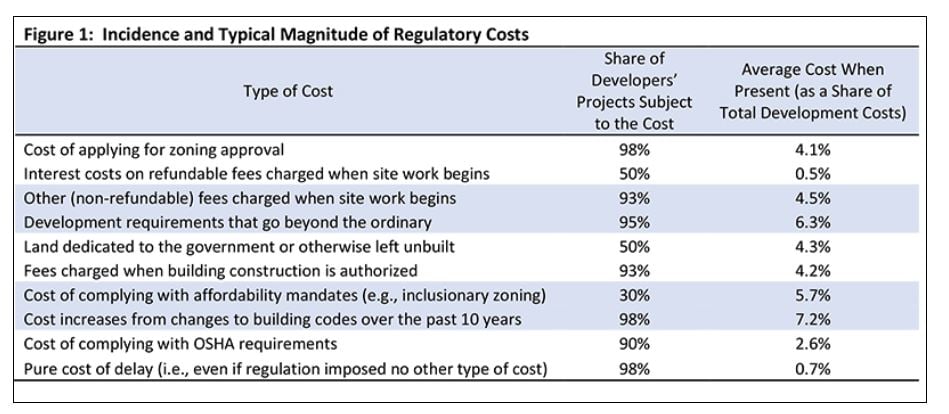© Touchpoint Markets, All Rights Reserved. Request academic re-use from www.copyright.com. All other uses, submit a request to [email protected]. For more inforrmation visit Asset & Logo Licensing.
Report: Regulation Accounts for 32% Of Multifamily Development Costs
Costly government regulations include sometimes lengthy approval processes, development standards that go beyond what would ordinarily be done, changes to building codes over the past decade, and OSHA requirements.
Trending Stories
Events
- Real EstateGlobeSt. ELITE Women of Influence (WOI) 2025July 21, 2025 - DenverGlobeSt. Women of Influence Conference celebrates the women who drive the commercial real estate industry forward.More Information
- Real EstateGlobeSt. Multifamily Fall 2025October 15, 2025 - Los AngelesJoin the industry's top owners, investors, developers, brokers & financiers at THE MULTIFAMILY EVENT OF THE YEAR!More Information
Recommended Stories
Senior Housing Lenders Report Greater Appetite for Loans While New Deal Flow Gains Momentum
By Kristen Smithberg | July 02, 2025
The lenders report increased competition and thinner spreads.
CRE Shows First Signs of Stress From Tariff Uncertainty
By Erik Sherman | July 02, 2025
Liquidity concerns are growing as investors brace for a delayed impact.
CRE Finds Its Footing as Price Gaps Narrow
By Erik Sherman | June 30, 2025
If the trend continues, it could mean that price CRE discovery has finally taken hold.
Resource Center

Report
Sponsored by TheGuarantors
2025 State of Renter Delinquency and Default
Renter default is a critical challenge. This report, based on a survey of 400+ multifamily professionals, reveals key trends, economic drivers, and mitigation gaps to help you build resilience in 2025. You'll gain insights into the root causes of renter default, the operational strains it can put on your portfolio, and strategies you can leverage to protect your investments and maintain stability.

Assessment
Sponsored by Building Engines
CRE Property Management Assessment: Your Building Operations Scorecard
How do your building operations measure up? Use this detailed scorecard to evaluate your operational approach across five key areas.

White Paper
Sponsored by TheGuarantors
5 Strategic Moves to Protect Your Multifamily NOI in 2025's Squeeze
Skyrocketing economic uncertainty means it’s essential for multifamily owners and operators to strengthen risk mitigation capabilities. Discover expert insights from industry experts, including the President of NMHC, to tackle 2025 challenges such as slower lease-ups, cost pressures, renter fraud, high reliance on concessions, and more.






